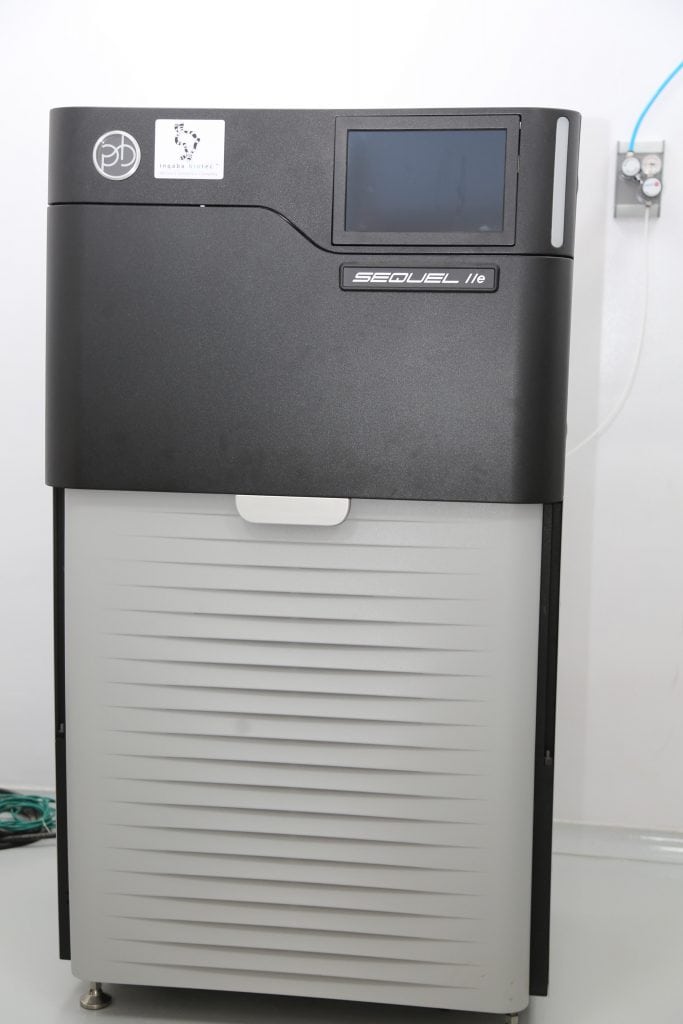The African Centre of Excellence for Genomics of Infectious Diseases (ACEGID) has greatly enhanced its genome sequencing capacity by acquiring two groundbreaking sequencing machines: the Illumina NovaSeq X Plus and the PacBio Sequel II e. These cutting-edge instruments will revolutionize our research capabilities, allowing us to explore the mysteries of life with unprecedented clarity and depth. These pieces of equipment were unveiled at the ACEGID Genomics Centre at Redeemer’s University, Ede, Nigeria.
“ACEGID continues to invest in state-of-the-art equipment simply because we are a reference centre for health research and innovation in Africa,” said Prof. Christian Happi, the Centre Director. “Investing in these pieces of equipment will put us in an advantageous position so that we can innovate, create, and bring forth novel solutions to the issues confronting the continent.”
Illumina NovaSeq X Plus: High-Throughput Sequencing Powerhouse
The Illumina NovaSeq X Plus is a powerhouse of sequencing throughput. This machine can generate billions of reads per run, enabling us to conduct large-scale studies with unparalleled efficiency.
With the Illumina NovaSeq X Plus, we will be able to:
- Perform large-scale population studies: Analyze genetic variations across diverse populations to identify disease-associated genes and understand the genetic basis of complex traits.
- Accelerate clinical research: Conduct large-scale clinical trials and genomic profiling of patients to develop personalized medicine strategies.
- Explore the microbial world: Sequence the genomes of entire microbial communities to understand their role in health, disease, and environmental processes through metagenomics.

PacBio Sequel II e: Unlocking Long-Read Accuracy
The PacBio Sequel II e is a marvel of modern engineering. It utilizes single-molecule real-time (SMRT) sequencing technology to generate long reads, often exceeding 30,000 bases in length. This remarkable feature allows us to delve deeper into the complexities of genomes, resolving previously ambiguous regions and uncovering hidden variations.
With the PacBio Sequel II e, we will be able to:
- Assemble complete genomes with greater accuracy: Long reads enable us to bridge gaps in traditional assemblies, leading to more accurate and comprehensive representations of genomes.
- Characterize complex genomic regions: Repetitive sequences and structural variations often pose challenges for short-read sequencing. The PacBio Sequel II e will allow us to confidently analyze these regions, unlocking valuable insights.
- Study transcriptomes with unprecedented detail: Long reads provide a clearer picture of RNA isoform diversity and alternative splicing events, deepening our understanding of gene expression.

A New Era of Discovery
The acquisition of these two remarkable machines marks a significant milestone for ACEGID’s genomics research work. The complementary nature of long-read and short-read technologies equips us with a holistic approach to genomic exploration. By combining the strengths of both instruments, we can now unravel the intricacies of the genome with a level of precision and efficiency previously deemed unattainable. The Illumina NovaSeq X Plus and the PacBio Sequel II e will enable us to make groundbreaking discoveries in areas like human health, disease, and evolution.
“The investment in the Illumina NovaSeq X Plus and the PacBio Sequel II is important because we are embarking on human genomic sequencing. And human genome sequence requires for you to do both short reads through Illumina NovaSeq X Plus and long reads through the PacBio Sequel II e,” said Prof. Happi.
Beyond the Horizon
As we integrate these state-of-the-art sequencers into our research work, the possibilities are as vast as the genome itself. From deciphering the genomic basis of diseases to unlocking the secrets of biodiversity, our laboratory is poised to make groundbreaking contributions to the scientific community.
“We intend in the next two years to sequence over 100,000 human genomes. That required this investment whereby we can not only show that this can be done in Africa, but that it can be done with the best tools possible. Eventually, we want to show the competitiveness of this continent and also show that good science can be done in Africa,” Prof. Happi concluded.
We are thrilled to embark on this exciting journey of scientific exploration and share our discoveries with the world. Stay tuned for updates on our ongoing research endeavours and the groundbreaking discoveries we make with these powerful new tools.
‘Fikayo Oyewale
